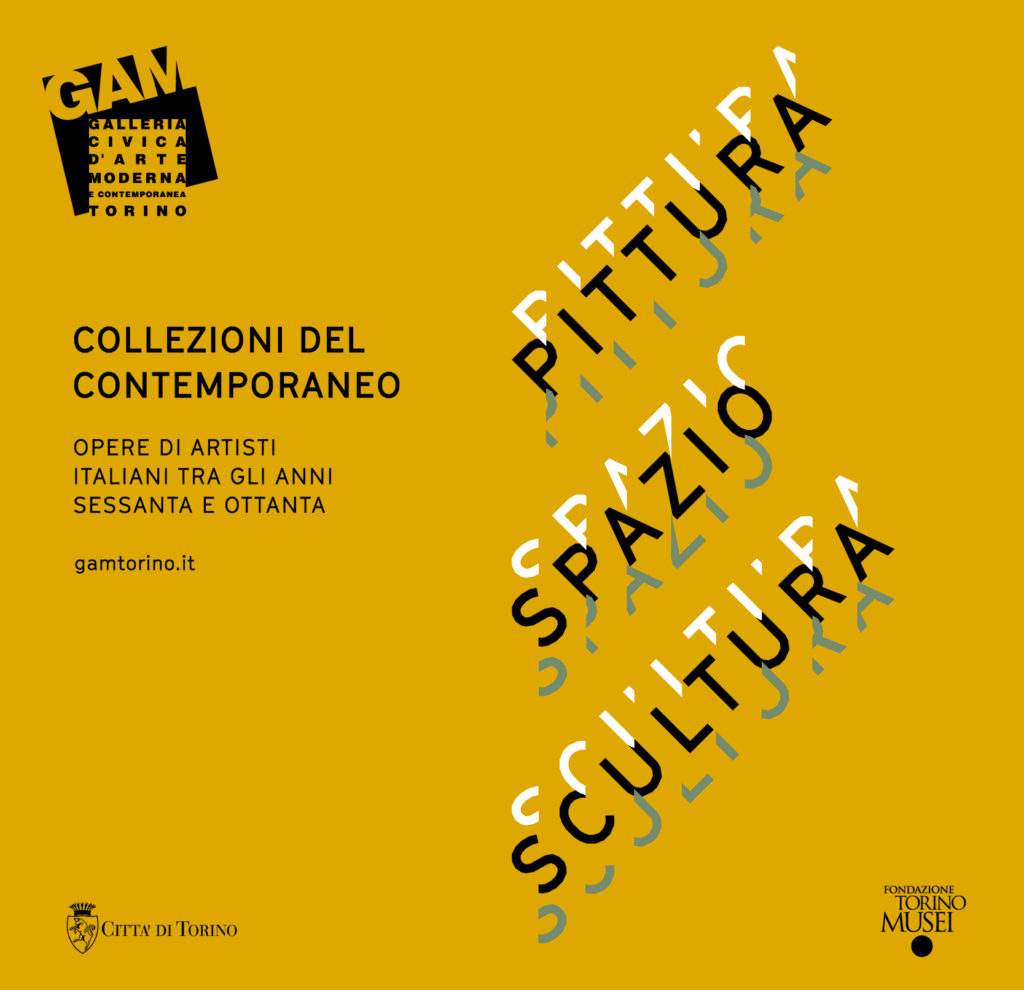Turin, GAM unveils new layout of contemporary collections
Through the exhibition Painting, Space, Sculpture. Works by Italian Artists between the 1960s and 1980s (which will remain open until October 4, 2020), the new arrangement of the contemporary collections. This is the first edition of a program of different arrangements that will follow one another on a biennial basis.
The different exhibitions will allow the public to learn about the richness of the museum’s collections and give voice to multiple readings and critical interpretations. This first arrangement, curated by Elena Volpato, focuses on two decades, between the 1960s and the 1980s,in chronological continuity with what is on display in the 1900s collections. It does so by choosing to recount relevant aspects of the artistic researches of those years, mostly poorly recognized by the most widespread historical interpretation.
In the mid-1960s, when artistic researches were moving in directions mostly aimed at subverting traditional artistic languages and disavowing any debt to the museum and art history, some Italian artists continued to question the meaning of sculpture, painting and drawing, the possibility of overcoming the limits that those languages had expressed so far. They did so without severing ties with history, setting their minds to the very origins of the pictorial and sculptural gesture, opening their works, as never before, to welcome and nourish within them the breath of space and, with it, that of time.
The artists represented are not part of a single group. Some of their names are linked to the events ofArte Povera. The path of others was intertwined with that of Analytical Painting. Still others, after a conceptual season, have found new reasons to return to reflect on traditional languages and ancient codes of expression. However, if their works seem to converse here naturally, it is not because of mere chronology, but because there is much more in the work of each of them than the words of militant critics had reason to tell. In all of them, as is often the case, there is more personality and independence than the reasons for a grouping or the trend lines of the art world can tell.
Decades later, now that those ensemble stories are known and codified, now that more and more international exhibitions are being paid tribute to some of them, we can allow ourselves to look at the more personal aspects of their work. And it is precisely in that individual figure that an unresolved link with art history, with its ancient languages, seems to resonate most clearly, for each in a different way but with similar force.
If one were to try to explain in one sentence what brings these works and their authors closer together, there where they seem to express their most personal voice, one would say that they have in common a genuine desire for art, a sense of belonging, an awareness of all that word had meant up to that point and all that it could still represent by virtue of that past.
The works on display come entirely from the museum’s collections. The most relevant exhibition nucleus is the result of numerous acquisitions made during the direction of Pier Giovanni Castagnoli, between 1998 and 2008. Many of these works were acquired thanks to the contribution of the Fondazione per l’Arte Moderna e Contemporanea CRT, to which we also owe the recent acquisition of artist’s books and two works by Marco Bagnoli, Vedetta notturna, 1986 and Iris, 1987, which took place during the current direction of Riccardo Passoni.
Mario Merz’sAnimale terribile, from 1981, and Luciano Fabro’s Gli Attaccapanni (di Napoli), the first among the works acquired by the Fondazione per l’Arte Moderna e Contemporanea CRT since its establishment, are part of a small group of works from the Margherita Stein Collection, purchased to be entrusted to the joint care of GAM - Galleria Civica d’Arte Moderna e Contemporanea and Castello di Rivoli.
Eighteen years after that purchase, GAM is happy to show the work of Luciano Fabro in its spaces for the first time.
For all information you can visit the official website of the GAM in Turin.
 |
| Turin, GAM unveils new layout of contemporary collections |
Warning: the translation into English of the original Italian article was created using automatic tools. We undertake to review all articles, but we do not guarantee the total absence of inaccuracies in the translation due to the program. You can find the original by clicking on the ITA button. If you find any mistake,please contact us.





























